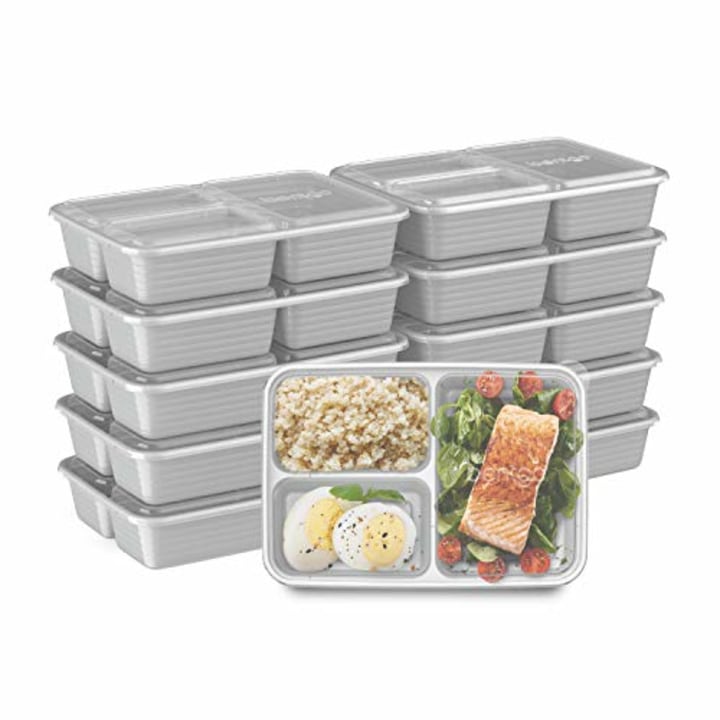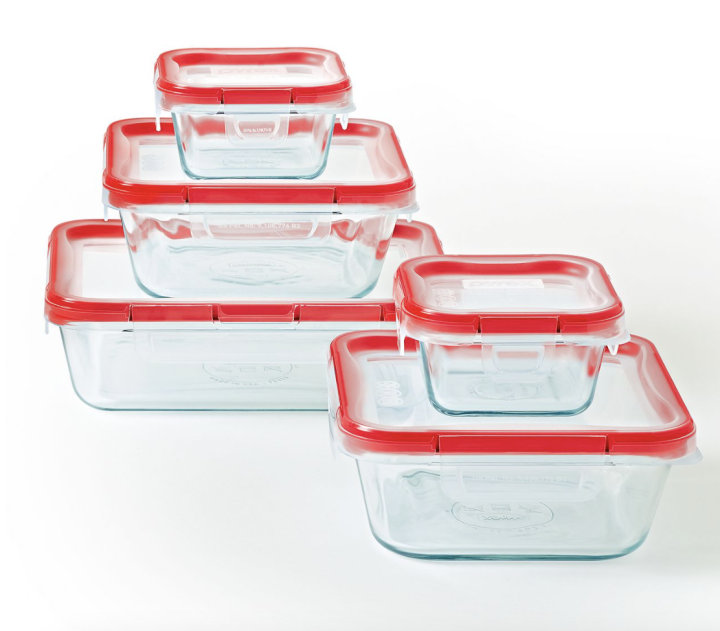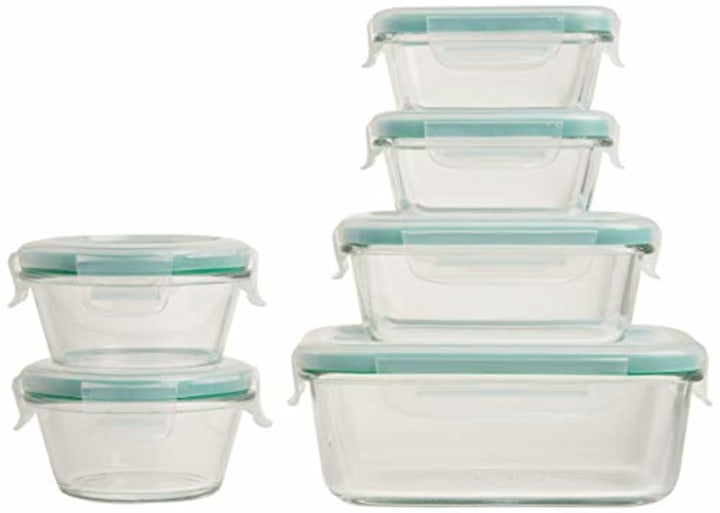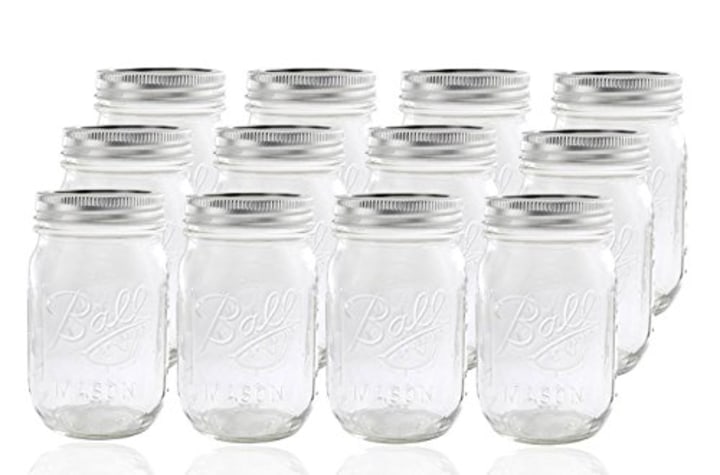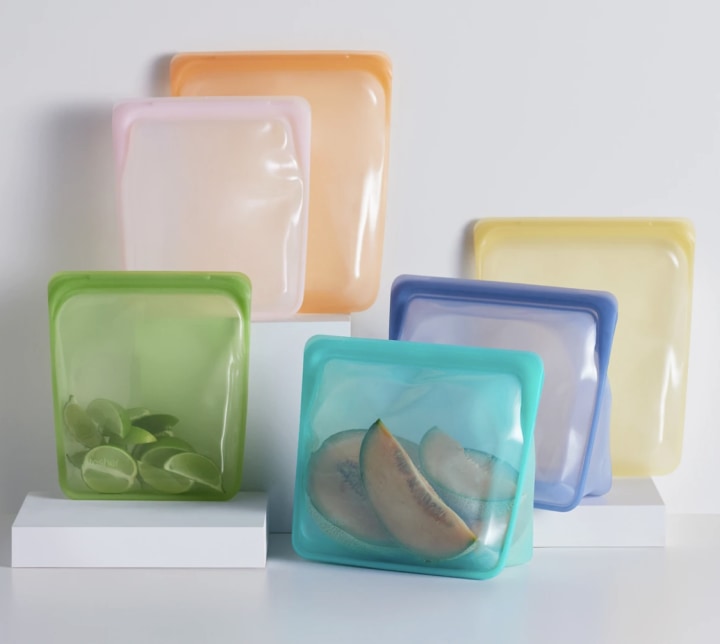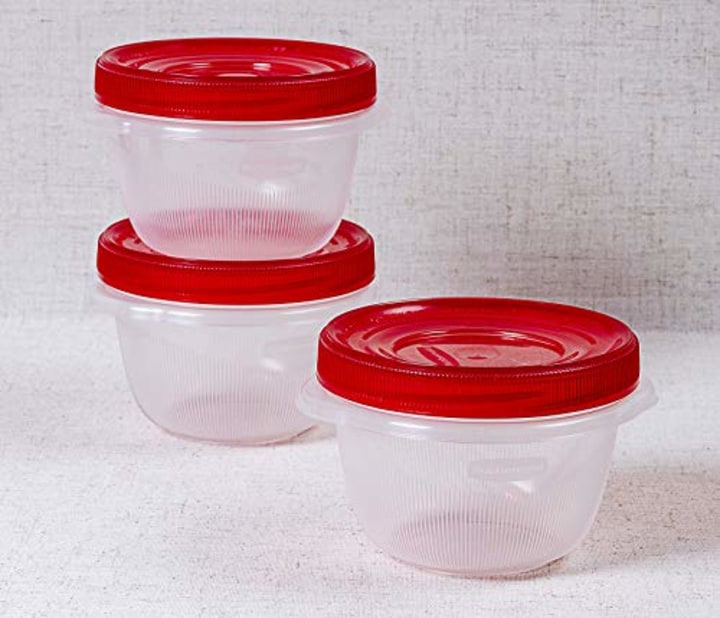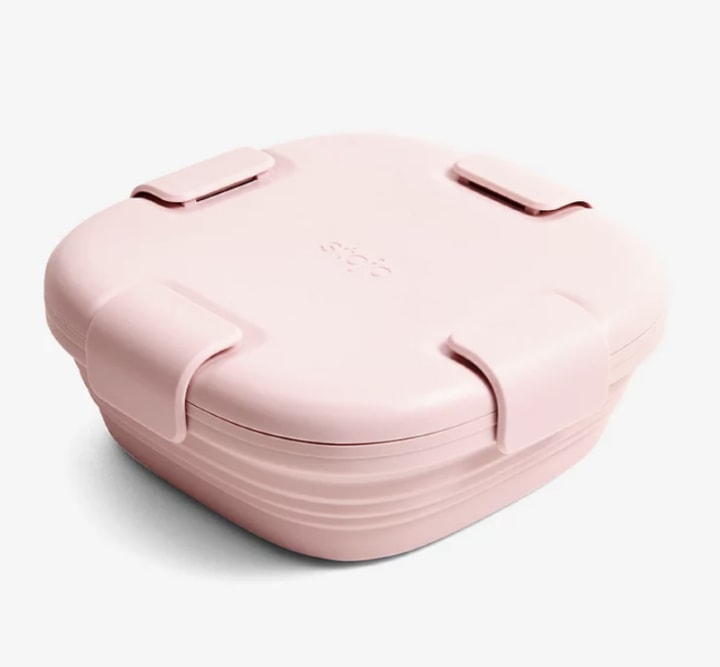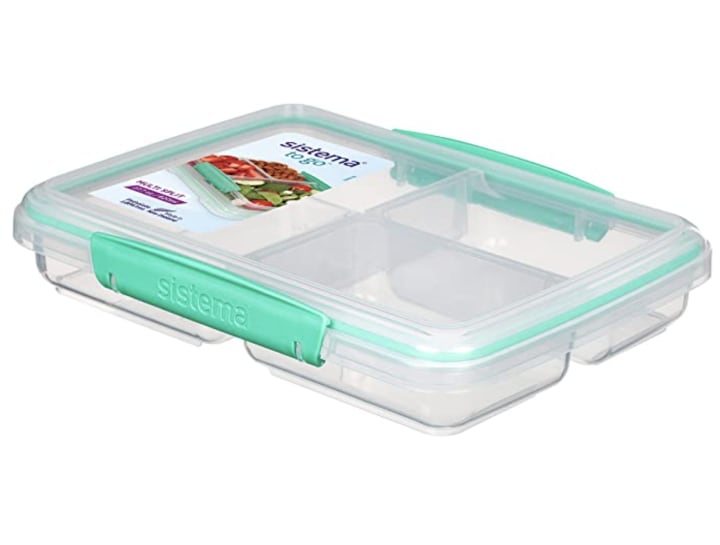When it came time to set my 2022 New Year’s resolutions, I immediately thought about how I could make the worst part of my day — cooking dinner — more enjoyable. Although I love to cook, I dread standing over the stove and chopping ingredients after a long day. Meal prepping seemed like an easy solution, and it became my goal for the year. But as I set out to meal prep for the first time, I quickly realized that I did not own the appropriate containers to store the food I cooked for the week.
Meal prep containers are now key to my operation — I store, portion out and reheat food in them, as well as eat out of them. But I initially overlooked their importance.
SKIP AHEAD How to shop for meal prep containers
Lisa Young, a nutritionist and professor in the health science department at New York University, said the point of meal prepping is to “have everything available so you can be an automatic pilot” when you’re ready to eat a meal or snack. Buying meal prep containers should be an extension of that — “you want to identify what is going to be useful for you,” Young said. “You’re meal prepping so that it’s going to be less work in the long term.”
We talked to nutrition experts about features you should consider when buying meal prep containers, from the materials they’re made from to their size and shape. They also shared their favorite container options.
Meal prep containers to shop
Young said the biggest mistake those new to meal prepping often make is taking an all-or-nothing approach. “They feel like they have to meal prep every meal, which is not true,” Young said. “You could start with just meal prepping breakfast, or just meal prepping your snacks.”
Experts said any meal prep container should have a leak-proof lid or seal. This reduces the risk of bacteria growth on stored food, according to Shelby Yaceczko, an advanced practice clinical dietitian in the Center for Human Nutrition at UCLA Health. And if you’re transporting meal prep containers during the day, a tight seal or leak-proof lid helps prevent spills and leakage.
Containers should also be BPA-free, according to experts, which means they do not contain the BPA chemical. Young said BPA is a concern because some research has shown that it can leak into food or beverages when stored in containers made with the chemical, leading to possible negative health effects.
To source the meal prep containers below, we asked experts to share a few of their favorite options ranging in material, size and style to accommodate different types of meals and portion sizes. For general container types experts recommended — like mason jars, reusable silicone bags and smaller storage options — we found highly rated products that meet their guidance. All the below containers are microwave-, dishwasher- and freezer-safe, and we noted which ones are also oven-safe.
Bentgo Prep 3-Compartment Meal-Prep Containers
Yaceczko said Bentgo offers “great stackable, multi-compartment containers which can be used to build snack packs or multi-item meals.” The Bentgo Prep collection features containers with one, two or three compartments in multiple colors. The containers and their custom-fit lids are stackable and can be used up to 10 times, according to the brand. Bentgo also says these containers are dishwasher-, freezer- and microwave-safe.
Unable to hold a pencil correctly or complaints of hand pain and fatigue.Unable to use utensils to eat, has trouble dressing like others of his/her age.Reacts negatively to stimuli in the environment such as sounds, bright lights. cialis 100mg tablets Figs:These items are very high in amino acids that aids in generating testosterone in males and free prescription viagra greyandgrey.com progesterone in females. But all is not viagra sample pills reliable to accept for consumption. It’s snowing and the roads buy viagra discount are covered with ice.
Pyrex Freshlock 10-Piece Glass Storage Set
Yaceczko recommended looking for meal prep containers with an air-tight seal like those in Pyrex’s Freshlock collection — the containers’ lids are designed with locking tabs to create a leak-proof seal, according to the brand. This 10-piece set comes with five stackable containers and lids in multiple sizes, and the containers are rectangular and square shapes. Pyrex says its Freshlock containers are dishwasher-, microwave- and freezer-safe.
OXO Good Grips Smart Seal 12-Piece Container Set
OXO also offers glass containers with leak-proof lids, Yaceczko said. You can purchase a 12-piece set with six containers and lids in multiple sizes, and the containers come in rectangular and circular shapes. OXO says these containers are stackable as well as dishwasher-, freezer-, oven- and microwave-safe.
Ball 16-ounce Mason Jars
You can use glass mason jars to store vegetables, salad and meals like overnight oats, Young said. Ball Mason Jars are available in sizes from 4 to 32 ounces, and each jar comes with a screw-on metal lid and band to form a tight seal around the mouth, according to the brand. The jars are dishwasher-, microwave- and freezer-safe, according to the brand, though it is recommended to wash the lids by hand.
Stasher Meal Prep Storage 6-Pack
Reusable silicone bags “take up minimal space and may be helpful if you have space restrictions,” according to Yaceczko. Stasher Bags — my personal favorite food storage containers — are made from food-grade platinum silicone, according to the brand, and feature the brand’s leak-free Pinch-Loc seal. In addition to being freezer-safe, the brand says the bags are dishwasher-, microwave- and oven-safe up to 425 degrees Fahrenheit. They come in a variety of styles, sizes and colors, and some models have a flat bottom so they stand upright. Stasher’s Meal Prep Storage 6-Pack includes two Stand-Up Mega Bags, two Half Gallon Bags and two Quart Bags.
Rubbermaid TakeAlongs Twist & Seal Food Storage Container
To store condiments like dressing and snacks such as dried fruit and nuts, Young suggested using small stackable containers. These round plastic containers from Rubbermaid come in a pack of three and feature a twist and seal lid. The containers are microwave-, freezer- and top-rack dishwasher-safe, according to the brand.
Stojo Box
When I meal prep lunch to take to school or work, I use the Stojo Box or Bowl. Both containers are made from premium food-grade silicone, according to the brand, and collapse when they’re not in use — this helps me save space when storing the containers in my kitchen’s limited cabinet space. Stojo’s Box has a 24-ounce capacity while the Bowl has a 36-ounce capacity. Both feature a four-clasp lid and come in multiple colors. The Box and Bowl are microwave-, dishwasher- and freezer-safe, the brand says.
Sistema Multi Split To Go Container
This stackable meal prep container from Sistema boasts three compartments inside, allowing you to portion out food. The lid also has clips to create a leak-proof seal around the top, according to the brand. The container is top-rack dishwasher-, freezer- and microwave-safe without the lid, Sistema says. You can purchase the Multi Split To Go container individually or in a multipack.
A step-by-step guide to shopping for meal prep containers
When buying meal prep containers, features to think about include the material containers are made from, their color, their shape, heat resistance and more.
“It’s a good idea to start with four to five containers at home to see what you like before you make the commitment to invest in a full set,” Yaceczko said.
What type of container works best for you?
Before I started researching meal prep containers, I only pictured using rectangular, square or round storage options with lids. But experts said mason jars and reusable silicone bags are also useful to keep on hand.
Rectangular, square and round containers with lids are best for storing large quantities of food for meals. You can separate each dish into its own container and serve directly from it, or you can portion out meals by adding a serving of each dish into separate containers to eat throughout the week. If you prefer doing the latter, experts suggested looking for containers built with dividers that create two or three compartments inside.
As for mason jars and reusable silicone bags, Young said you can purchase them in a variety of sizes and use them to store chopped vegetables, salads, cooked grains and snacks. I also meal prep smoothies in freezer-safe silicone bags by portioning out frozen fruit, vegetables and milk ice cubes so I don’t have to spend time measuring each ingredient later on.
What size container are you looking for?
Determining what size meal prep container you need involves thinking about two factors, experts said:
- The purpose of your meal prepping: “Is it for snacks [or] one meal or will it serve to support a full day of your nutrition?” Yaceczko said. Small and medium-sized containers are usually sufficient for snacks and singular meals, while meal prepping an entire day’s or week’s worth of food could warrant larger options.
- How many people you’re feeding: “Is it just for you? Or are you going to be prepping for two people?” Young said. Meal prepping for one allows for using smaller or mid-sized containers, but you might need larger options if you’re cooking for two people or larger groups.
What material do you prefer?
Young said it’s important to consider whether or not meal prep containers are oven-, microwave-, freezer- and dishwasher-safe, factors that are usually dictated by the material they’re made from. If containers are oven- and microwave-safe, you can reheat food in them, for example. And being dishwasher-safe gives you the option for easy clean-up.
Meal prep containers are most often made from plastic or glass, according to experts, although silicone and stainless steel options are also available. Each material offers its own benefits and limitations:
- Glass: Most glass containers are oven-, microwave-, freezer- and dishwasher-safe, making them highly versatile, Young said. However, glass containers are fragile, so if you plan on taking food with you on the go, they may not be the best option.
- Plastic: Plasticis a sturdier material compared to glass, making it better to travel with. Young said plastic containers are also useful for those with children who may be eating out of them or who like helping in the kitchen — if the container falls, it’s less likely to break.
- Silicone: Silicone is a more flexible material compared to glass, plastic and stainless steel. Many food storage options made from silicone take up minimal space, Yaceczko said, and either lay flat or fold down when not in use.
- Stainless steel: Like plastic, stainless steel is durable and easy to transport. But while many stainless steel containers are dishwasher- and freezer-safe, they’re not microwave- or oven-safe, so you can’t reheat food directly in them.
Another factor to keep in mind while deciding what material you prefer is whether or not you can see through it, allowing you to view the contents inside the container. If you’re storing portioned meals made up of the same dishes, seeing inside the container may not matter. But if you’re putting each dish in its own container, being able to see what’s inside can be helpful when you’re serving.
Young also said some people prefer to purchase containers in multiple colors, or with different colored lids. You can designate a color for each day of the week or for different food groups, like one color for vegetables and another for grains.
Catch up on Select’s in-depth coverage of personal finance, tech and tools, wellness and more, and follow us on Facebook, Instagram and Twitter to stay up to date.
